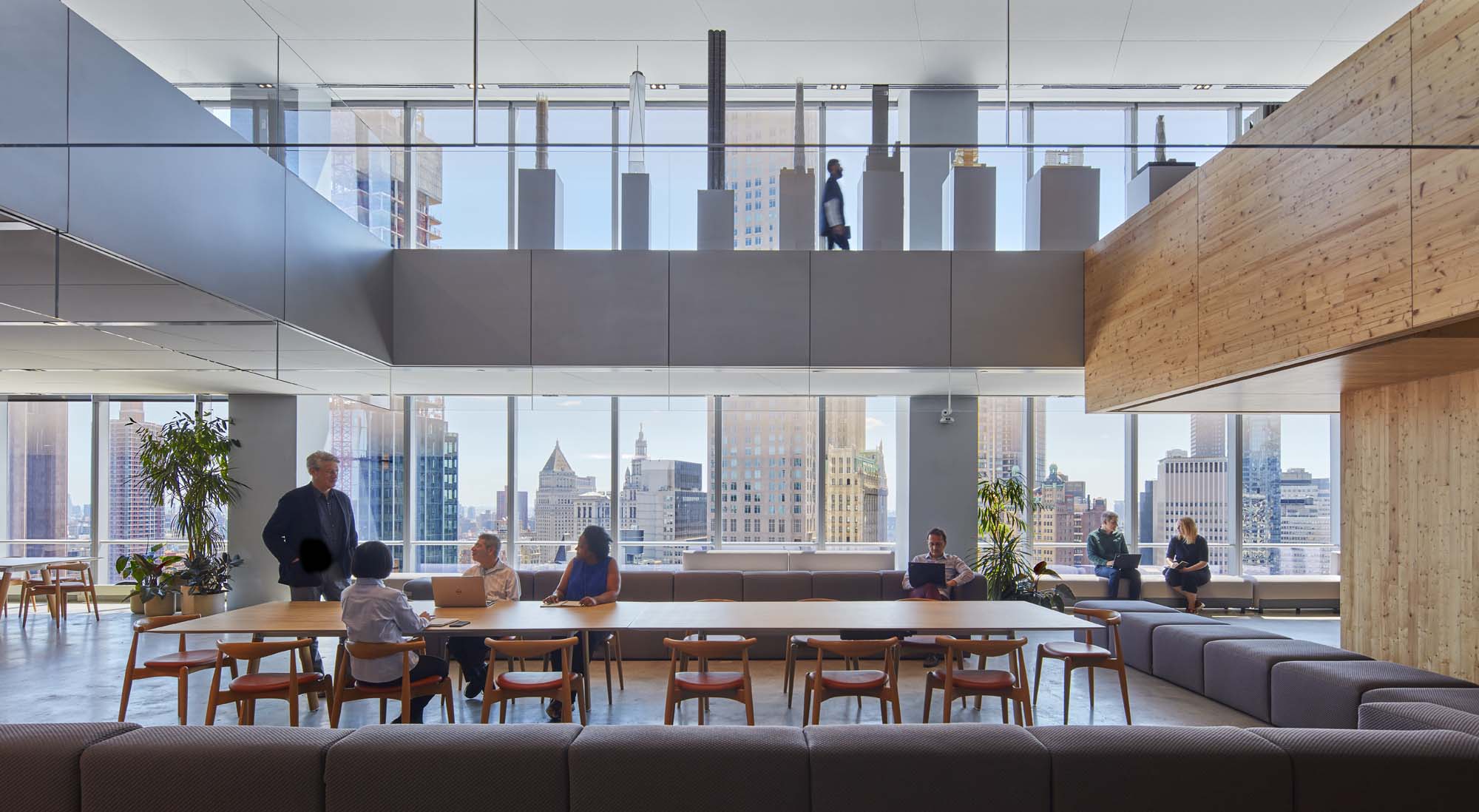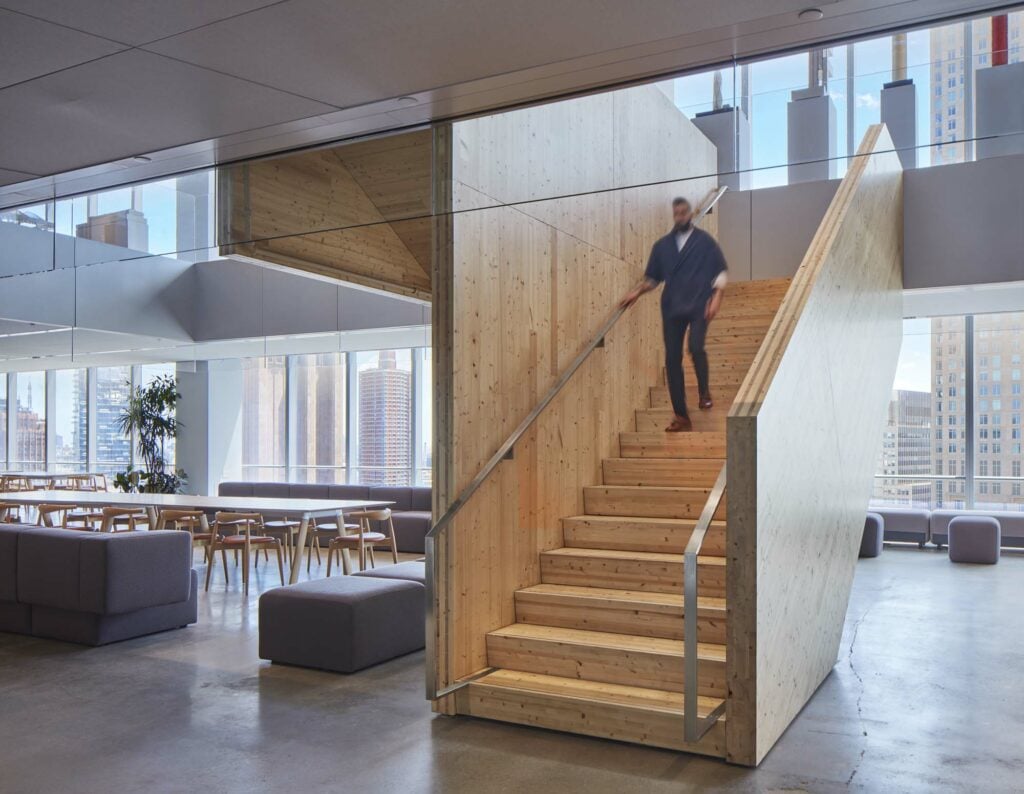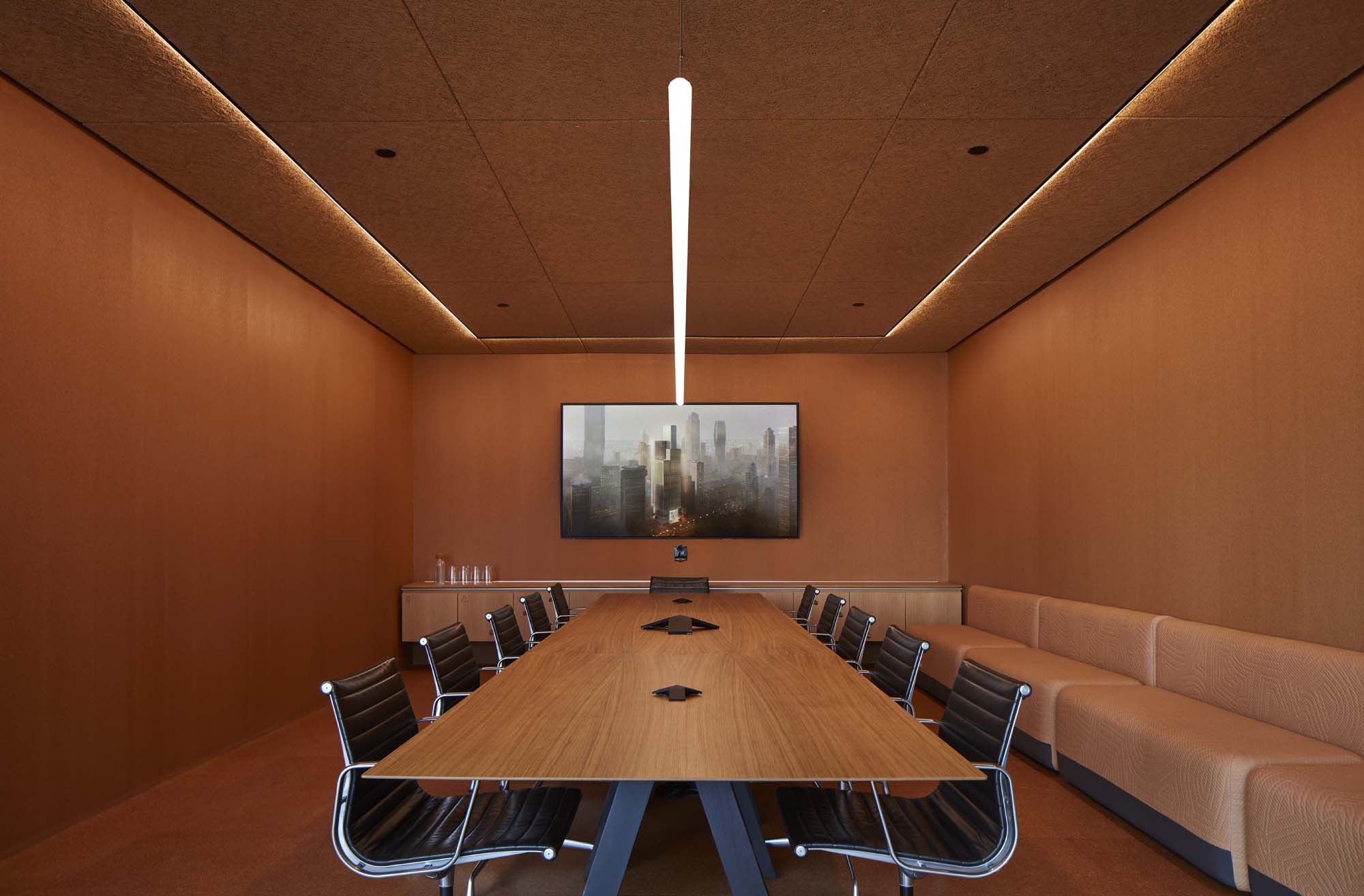
SOM’s New York office is a teachable moment
SOM’s New York team had held an office on Wall Street for two decades. Moving to the LEED GOLD rated 7 World Trade, the staff agreed on a mandate: the new space should reflect the workplaces of the future that the global company is designing for its clients. The ambition was to create a space as open, healthy, comfortable and energy-efficient as possible: an office that is both a laboratory and a model for cutting-edge research in materiality, sustainability and biophilic design.
More Metropolis

Plans were underway, including fitting all staff onto laptops and removing bulky computer towers, when the pandemic hit. “There has been movement in the right direction, but the pandemic has been like an inflection point. It accelerated so many ideas that were already percolating. The writing was already on the wall about flexibility, not being tied to a desk, a healthy work environment, access to light, views and air,” notes Cooper.
To guide their process, Cooper and his team decided to pursue WELL Certification, a roadmap for creating healthy spaces with metrics in architectural and quality of life categories such as thermal comfort, light, and access. to healthy foods and materials. Ultimately, the desk achieved Platinum status, WELL’s highest metric. “Sometimes these box-checking systems can get deflated,” Cooper says, “but I would say GOOD made us do things that maybe wouldn’t have been triggered.” Examples include abundant natural light, large open spaces, indoor plantings for sunny and shady locations, and minimal noise thanks to fabric-wrapped acoustic ceilings. The investment has made a “profound” difference to the office experience, Cooper says, adding life and vibrancy even if the 400-person office is never fully occupied in the hybrid work environment.
WELL also inspired the team to seek out and avoid any material on the “Red List”, a compilation of building materials and interior products that pose a risk to human and environmental health. The certification program requires long-term air monitoring, which SOM has installed. Data is shared across the office. “You understand that you are part of a living space,” says Cooper. Employees completed a Leesman Office survey, an independent measure of job satisfaction, before and after occupying the new space. The results qualified the office for a “Leesman+” designation, ranking among the top 5% of workplaces surveyed globally in terms of outstanding lived experience. “The difference is day and night. We’ve made great strides,” says Cooper.

As for the program, SOM’s avant-garde movements begin at the entrance to the office, where guests and employees are greeted by what Cooper calls the “forum”, a kind of double-height open living room , with a long conference table surrounded by soft seats. The space works for small client meetings, reviews, and celebrations. Nearby, a large connecting staircase is the sculptural centerpiece of the office, leading to 28e floor kitchen. Three CLT walls act as the beams and stringers of the staircase, integrating structure, finish and function.
Both the staircase and the forum are symbolic of SOM’s guiding design philosophy for the office – “radical reduction” – which meant “evaluate all your decisions to be as reductive as possible in the final iteration”, explains Cooper. The result is decidedly avant-garde in design, he adds, but not in aesthetics. For example, the company removed as many walls as possible, concealed support systems and a low-power spot lighting system (designed by Tillotson Design Associates) behind the acoustic ceilings, and used the existing concrete slabs of the building instead of applying wall finishes.
Studios on both floors, organized around open collaboration spaces (four times the offerings of the former SOM office), add to the light footprint. The design team chose desks with a smaller surface area, knowing that not everyone would be in the office at the same time and bumping elbows. Employees can seamlessly move from one work environment to another. Instead of pin-up spaces, which are used less and less in the new hybrid work environment, screens and digital technology are installed to speed up virtual communication. The partners also have office space in the studios, reclaiming more square footage for shared collaboration and amenity spaces, a generous library of materials, a second shared cafe on the 27th floor, and a tectum conference (a rapidly regenerating wood fibre) and cork. rooms.
The move to New York coincided with the move of several other SOM US offices, some of which also moved to SOM-designed buildings. Collectively, they represent, in constructed form, the 87-year-old company’s ambition to move towards a more open and less hierarchical organization, says Cooper: “I hope this expresses another cultural shift in how we see ourselves, how we work, who we are and how we position ourselves for the next generation.


Comments are closed.